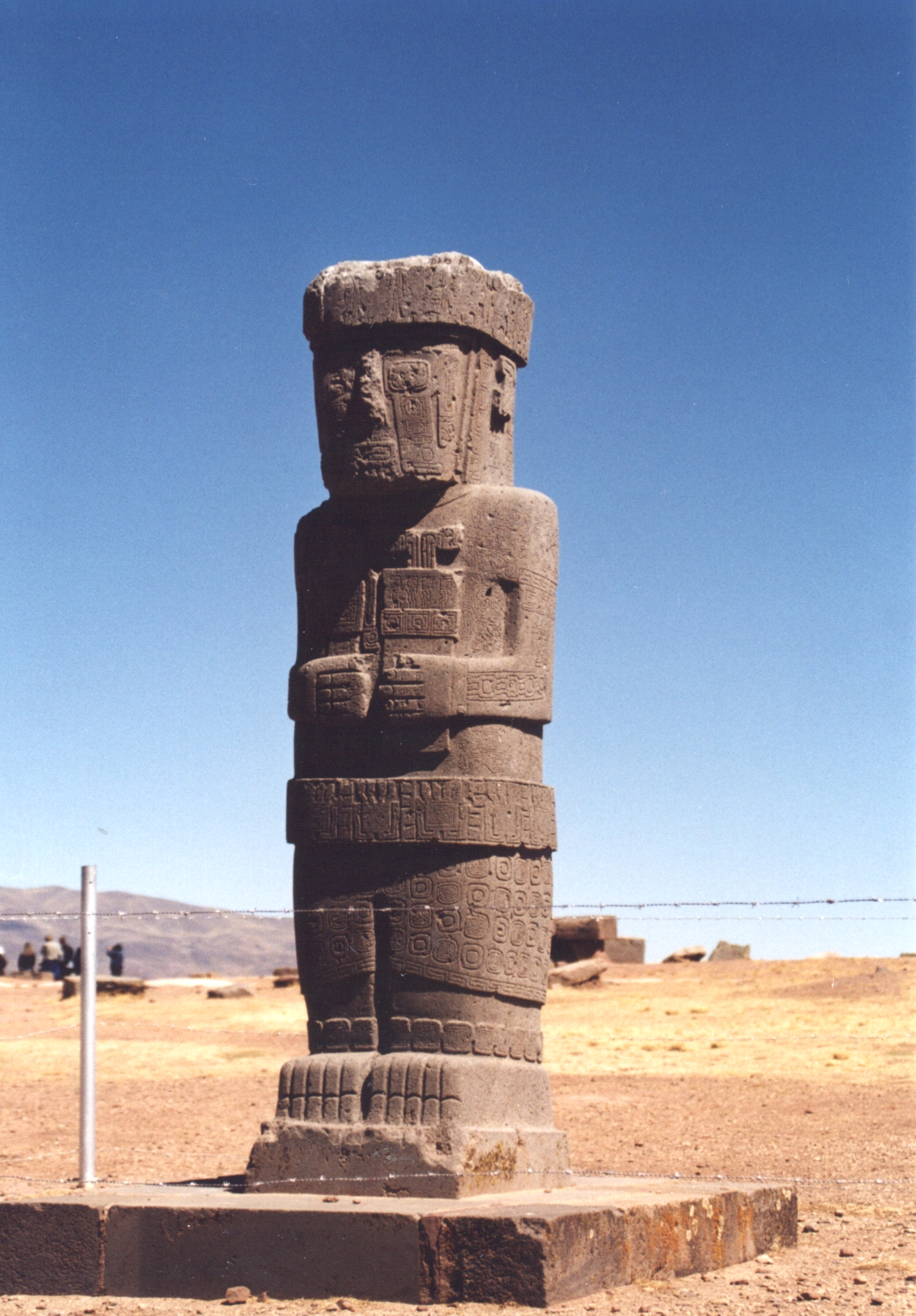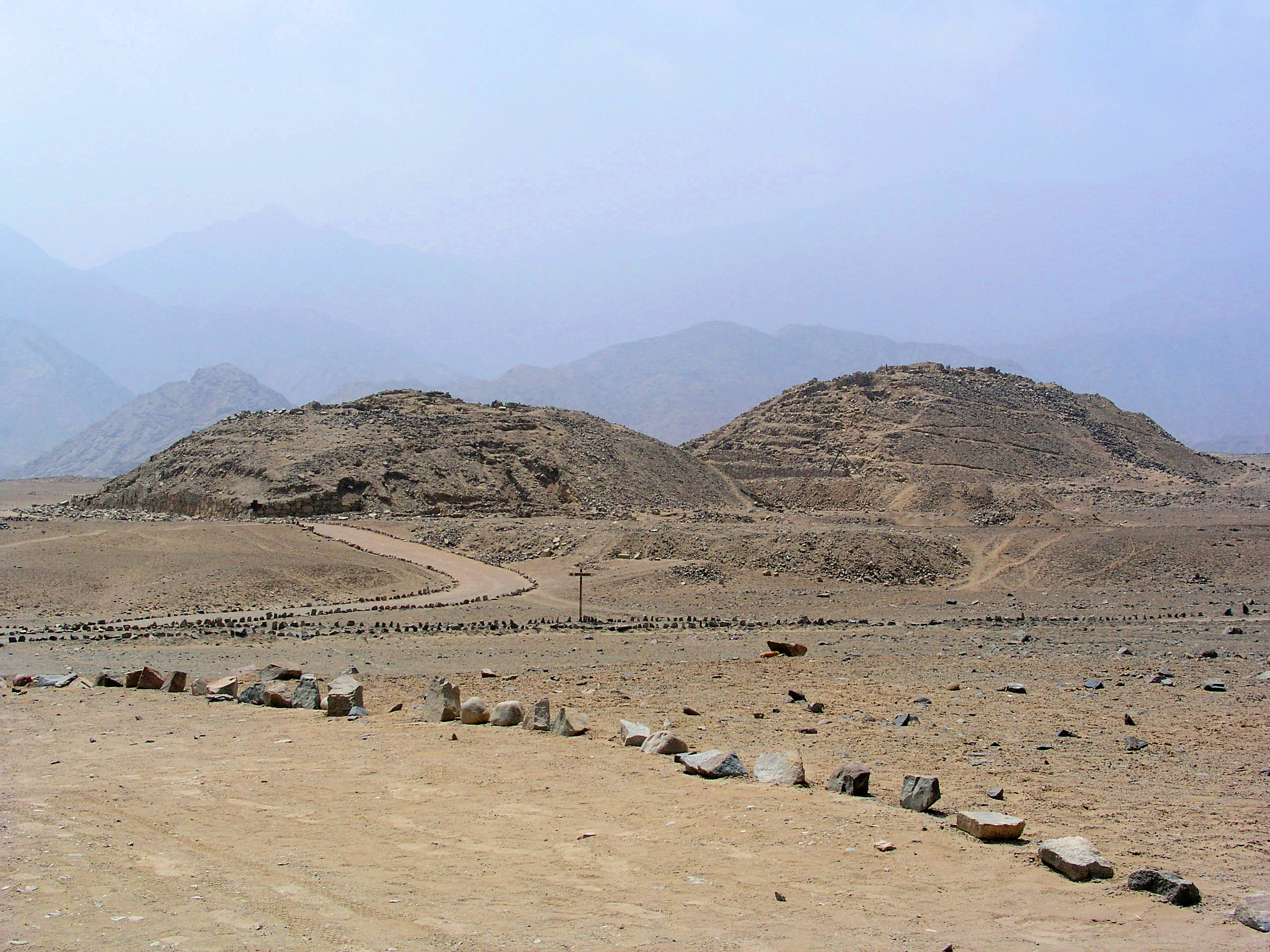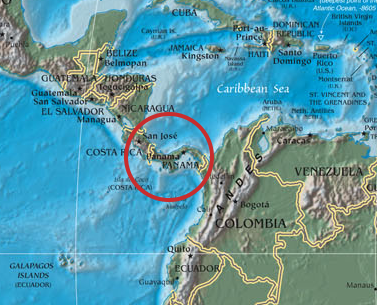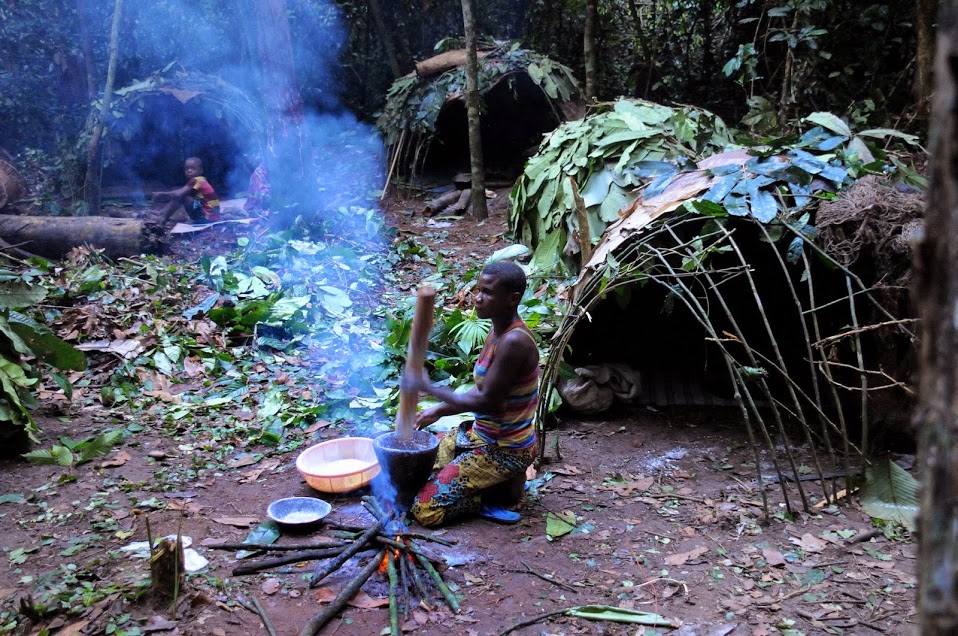|
Andean Civilizations
The Andean civilizations were South American complex societies of many indigenous people. They stretched down the spine of the Andes for from southern Colombia, to Ecuador and Peru, including the deserts of coastal Peru, to north Chile and northwest Argentina. Archaeologists believe that Andean civilizations first developed on the narrow coastal plain of the Pacific Ocean. The Caral or Norte Chico civilization of coastal Peru is the oldest known civilization in the Americas, dating back to 3500 BCE. Andean civilizations are one of at least five civilizations in the world deemed by scholars to be "pristine." The concept of a "pristine" civilization refers to a civilization that has developed independently of external influences and is not a derivative of other civilizations. Despite the severe environmental challenges of high mountains and hyper-arid desert, the Andean civilizations domesticated a wide variety of crops, some of which, such as potatoes, peppers, peanuts, man ... [...More Info...] [...Related Items...] OR: [Wikipedia] [Google] [Baidu] |
Inca Roads-en
The Inca Empire, officially known as the Realm of the Four Parts (, ), was the largest empire in pre-Columbian America. The administrative, political, and military center of the empire was in the city of Cusco. The Inca civilisation rose from the Peruvian highlands sometime in the early 13th century. The Portuguese explorer Aleixo Garcia was the first European to reach the Inca Empire in 1524. Later, in 1532, the Spanish began the conquest of the Inca Empire, and by 1572 the last Inca state was fully conquered. From 1438 to 1533, the Incas incorporated a large portion of western South America, centered on the Andean Mountains, using conquest and peaceful assimilation, among other methods. At its largest, the empire joined modern-day Peru with what are now western Ecuador, western and south-central Bolivia, northwest Argentina, the southwesternmost tip of Colombia and a large portion of modern-day Chile, forming a state comparable to the historical empires of Eurasia. Its of ... [...More Info...] [...Related Items...] OR: [Wikipedia] [Google] [Baidu] |
Coca
Coca is any of the four cultivated plants in the family Erythroxylaceae, native to western South America. Coca is known worldwide for its psychoactive alkaloid, cocaine. Coca leaves contain cocaine which acts as a mild stimulant when chewed or consumed as tea, with slower absorption than purified cocaine and no evidence of addiction or withdrawal symptoms from natural use. The coca plant is a shrub-like bush with curved branches, oval leaves featuring distinct curved lines, small yellowish-white flowers that develop into red berries. Genomic analysis reveals that coca, a culturally and economically important plant, was domesticated two or three separate times from the wild species ''Erythroxylum gracilipes'' by different South American groups during the Holocene. Chewing coca in South America began at least 8,000 years ago, as evidenced by coca leaves and calcite found in house floors in Peru’s Nanchoc Valley, suggesting early communal use alongside the rise of farming. ... [...More Info...] [...Related Items...] OR: [Wikipedia] [Google] [Baidu] |
Chavín Culture
The Chavín culture was a Pre-Columbian era, pre-Columbian civilization, developed in the northern Andean highlands of Peru around 900 BCE, ending around 250 BCE. It extended its influence to other civilizations along the Peruvian coast.Burger, Richard L. 2008 "Chavin de Huantar and its Sphere of Influence", In ''Handbook of South American Archeology'', edited by H. Silverman and W. Isbell. New York: Springer, pp. 681–706Burger, Richard L., and Nikolaas J. Van Der Merwe (1990). "Maize and the Origin of Highland Chavín Civilization: An Isotopic Perspective", ''American Anthropologist'' 92(1):85–95. The Chavín people (whose name for themselves is unknown) were located in the Mosna Valley where the Huari District, Mosna and Huachecsa river, Huachecsa rivers merge. This area is above sea level and encompasses the ''Quechua (geography), quechua'', ''suni (geography), suni'', and ''puna grassland, puna'' life zones.Burger (1992), ''Chavin and the Origins of Andean Civilization'' ... [...More Info...] [...Related Items...] OR: [Wikipedia] [Google] [Baidu] |
Kotosh Religious Tradition
The Kotosh Religious Tradition is a term used by archaeologists to refer to the ritual buildings that were constructed in the mountain drainages of the Peruvian Andes between circa 3000 and c. 1800 BCE, during the Andean preceramic, or Late Archaic period of Andean history. Moseley 2001. p. 109. Archaeologists have identified and excavated a number of these ritual centers; the first of these to be discovered was that at Kotosh, although since then further examples have been found at Shillacoto, Wairajirca, Huaricoto, La Galgada, Piruru, among others. These sites are all located in highland zones that are lower than the Puna, and yet there are considerable distances separating them. In spite of this, all these cases of highland preceramic public architecture are remarkably similar. Kotosh tradition shows numerous links with the Chavín culture that emerged at most of these sites subsequently. Archaeological context Three cultural phases which preceded the Chavín culture wer ... [...More Info...] [...Related Items...] OR: [Wikipedia] [Google] [Baidu] |
Andean Preceramic
The Andean preceramic refers to the early period of human occupation in the Andes, Andean area of History of South America, South America that preceded the introduction of ceramics. This period is also called pre-ceramic or aceramic. Earliest human occupations The earliest humans that came to South America are known as Paleo-Indians. This period is generally known as the Lithic stage. After this came the period that is widely known as Archaic, although there are also some different classifications of this period. The precise classification is complicated because somewhat different terminologies tend to be used for North America and Mesoamerica. The Andean preceramic period would include cultures that belong to Lithic and Archaic stages. Preceramic in Peru The Zaña Valley in northern Peru contains the earliest known canals in South America. These were small stone-lined canals which drew water from streams in the Andes Mountains region. These canals may have been built as ear ... [...More Info...] [...Related Items...] OR: [Wikipedia] [Google] [Baidu] |
Isthmus Of Panama
The Isthmus of Panama, historically known as the Isthmus of Darien, is the narrow strip of land that lies between the Caribbean Sea and the Pacific Ocean, linking North America, North and South America. The country of Panama is located on the isthmus, along with the Panama Canal. Like several isthmuses on Earth, as a relatively narrow land bridge between close seas, it is a location of great geopolitical and strategic importance. The isthmus is thought to have finally formed around 3 million years ago (Year#Abbreviations for "years ago", Ma), separating the Atlantic and Pacific Oceans and causing the creation of the Gulf Stream, as first suggested in 1910 by Henry Fairfield Osborn. Osborn based the proposal on the fossil record of mammals in Central America, a conclusion that would provide a foundation for Alfred Wegener when he proposed the theory of continental drift in 1912. Some recent studies suggest an earlier formation of the isthmus than the recognized age of 3 Ma, poten ... [...More Info...] [...Related Items...] OR: [Wikipedia] [Google] [Baidu] |
Hunter-gatherer
A hunter-gatherer or forager is a human living in a community, or according to an ancestrally derived Lifestyle, lifestyle, in which most or all food is obtained by foraging, that is, by gathering food from local naturally occurring sources, especially wild edible plants but also insects, Fungus, fungi, Honey hunting, honey, Eggs as food, bird eggs, or anything safe to eat, or by hunting game (pursuing or trapping and killing Wildlife, wild animals, including Fishing, catching fish). This is a common practice among most vertebrates that are omnivores. Hunter-gatherer Society, societies stand in contrast to the more Sedentism, sedentary Agrarian society, agricultural societies, which rely mainly on cultivating crops and raising domesticated animals for food production, although the boundaries between the two ways of living are not completely distinct. Hunting and gathering was humanity's original and most enduring successful Competition (biology), competitive adaptation in the nat ... [...More Info...] [...Related Items...] OR: [Wikipedia] [Google] [Baidu] |
Aspero
Aspero is a well-studied Late Preceramic site archaeological complex located near the mouth of the Supe River, south of Supe Puerto, on the central coast of Peru. It forms part of the ancient Caral-Supe civilization and was occupied during the Late Archaic period, from before 3000 BCE to around 1800 BCE. It is connected culturally to the ancient city of Caral, located 25 km up-valley, for which it presumably served as a major fishery. The site covers an area of approximately 14 hectares (35 acres) and features numerous temples or huacas, of which the most prominent are the Huaca Alta, the Huaca de los ídolos and the Huaca de los Sacrificios. Remains of human sacrifice have been found in the latter, dated to about 4500 years ago. Location Aspero is located on the right bank of the Supe River, 2 km south of the port of the same name, about 500 m from the Pacific Ocean, in the midst of sandy hills, wetlands and cultivated fields. It belongs to the jurisdiction of the dis ... [...More Info...] [...Related Items...] OR: [Wikipedia] [Google] [Baidu] |
Cusco
Cusco or Cuzco (; or , ) is a city in southeastern Peru, near the Sacred Valley of the Andes mountain range and the Huatanay river. It is the capital of the eponymous Cusco Province, province and Cusco Region, department. The city was the capital of the Inca Empire until the 16th-century Spanish conquest of Peru, Spanish conquest. In 1983, Cusco was declared a World Heritage Site by UNESCO with the title "Historic Centre of Cusco, City of Cusco". It has become a major tourist destination, hosting over 2 million visitors a year and providing passage to numerous Incan ruins, such as Machu Picchu, one of the Seven modern wonders of the world and many others. The Constitution of Peru (1993) designates the city as the Historical Capital of Peru. Cusco is the list of cities in Peru, seventh-most populous city in Peru; in 2017, it had a population of 428,450. It is also the largest city in the Peruvian Andes and the region is the seventh-most populous List of metropolitan areas ... [...More Info...] [...Related Items...] OR: [Wikipedia] [Google] [Baidu] |





